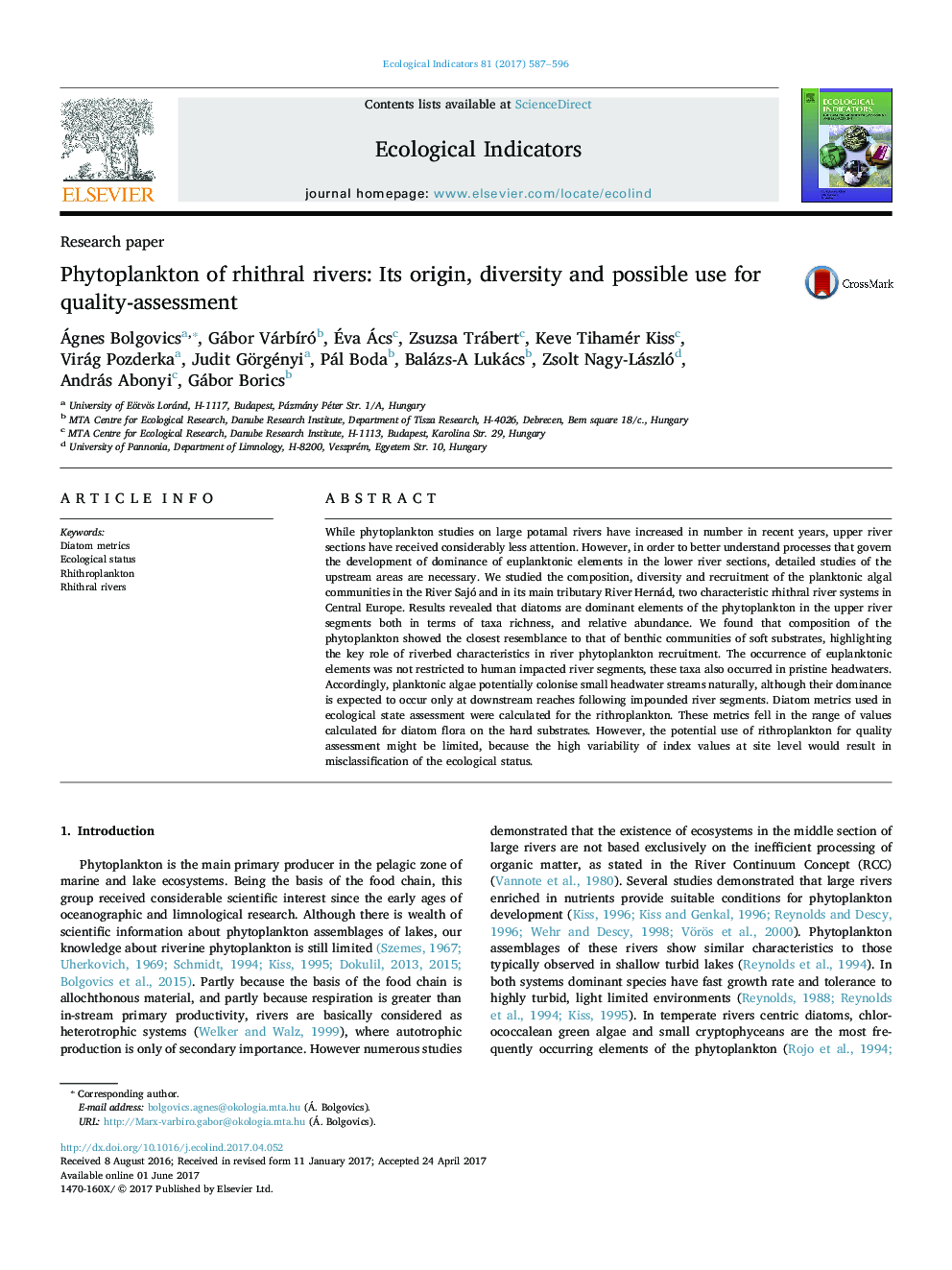| Article ID | Journal | Published Year | Pages | File Type |
|---|---|---|---|---|
| 5741460 | Ecological Indicators | 2017 | 10 Pages |
While phytoplankton studies on large potamal rivers have increased in number in recent years, upper river sections have received considerably less attention. However, in order to better understand processes that govern the development of dominance of euplanktonic elements in the lower river sections, detailed studies of the upstream areas are necessary. We studied the composition, diversity and recruitment of the planktonic algal communities in the River Sajó and in its main tributary River Hernád, two characteristic rhithral river systems in Central Europe. Results revealed that diatoms are dominant elements of the phytoplankton in the upper river segments both in terms of taxa richness, and relative abundance. We found that composition of the phytoplankton showed the closest resemblance to that of benthic communities of soft substrates, highlighting the key role of riverbed characteristics in river phytoplankton recruitment. The occurrence of euplanktonic elements was not restricted to human impacted river segments, these taxa also occurred in pristine headwaters. Accordingly, planktonic algae potentially colonise small headwater streams naturally, although their dominance is expected to occur only at downstream reaches following impounded river segments. Diatom metrics used in ecological state assessment were calculated for the rithroplankton. These metrics fell in the range of values calculated for diatom flora on the hard substrates. However, the potential use of rithroplankton for quality assessment might be limited, because the high variability of index values at site level would result in misclassification of the ecological status.
